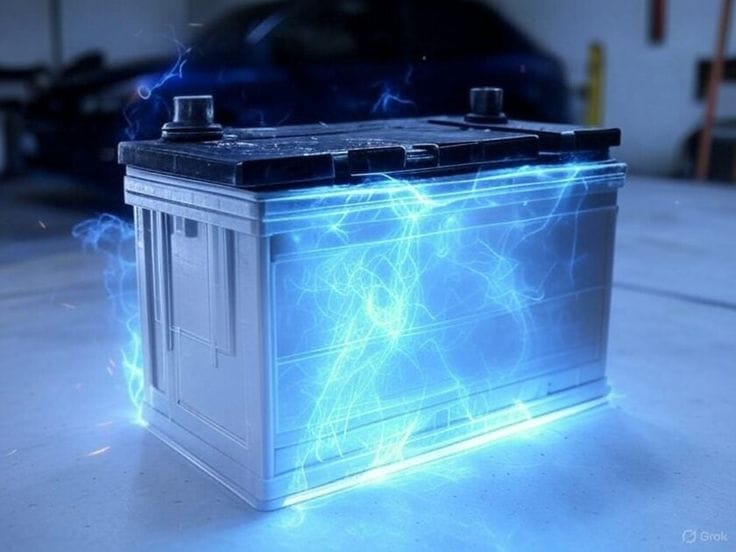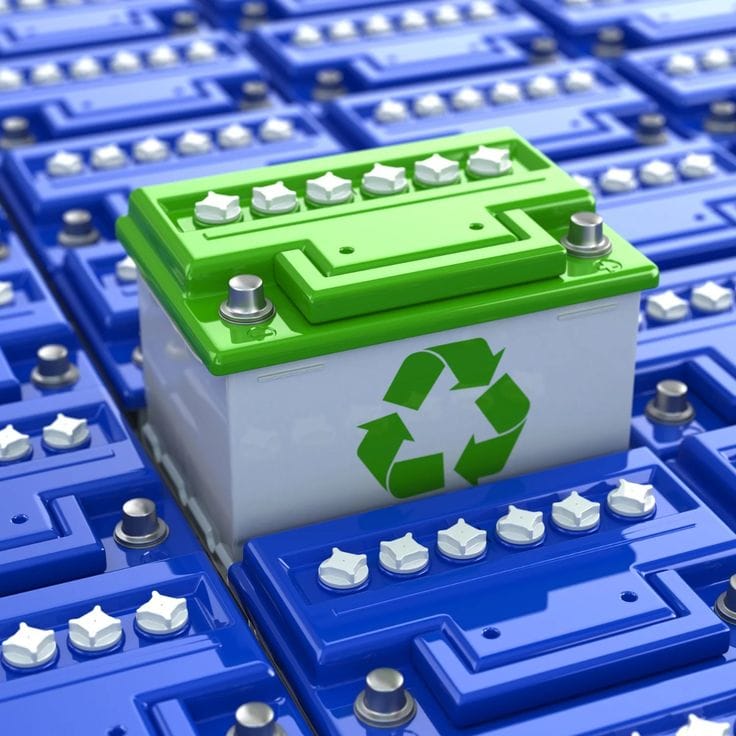In a world increasingly powered by electronics and electric vehicles, the need for battery technology to replace lithium has become more urgent than ever. While lithium-ion batteries have been the industry standard for decades, concerns about cost, safety, and sustainability are pushing scientists to explore exciting alternatives. From sodium-ion batteries to solid-state solutions, innovators are racing to deliver the next breakthrough. Could these new battery technologies revolutionize everything from smartphones to EVs? Let’s explore what the future might hold beyond lithium.
The Rise of New Battery Technologies
The world is witnessing a rapid evolution in battery technologies as demand for efficient, eco-friendly solutions increases. Traditional lithium-ion batteries, though widely used, have prompted the development of new battery options due to limitations in cost, resource scarcity, and safety. Today, alternative battery technologies, including sodium-ion batteries and solid-state batteries, are gaining ground. These batteries offer new possibilities for energy storage systems in EVs, mobile devices, and grid applications. The shift is driven by innovation and the urgent need to replace lithium-ion batteries with safer and more sustainable options.
Why Lithium-Ion Batteries Are Being Replaced
While lithium-ion batteries have powered the tech boom, their reliance on scarce materials like cobalt, nickel, and lithium raises environmental and ethical concerns. In addition, safety risks such as overheating and flammability, linked to their liquid electrolyte—further highlight the need to replace the lithium standard. New battery tech now aims to improve battery capacity, charging time, and lifespan while reducing costs and sourcing issues. As a result, industries are exploring sustainable alternatives like sodium and solid-state cells.
Did you know sodium-ion batteries use salt instead of lithium? They offer a safer, low-cost alternative.
What Makes New Battery Technologies More Promising
Unlike conventional lithium-ion batteries, new battery technologies use materials that are more abundant and safer. For instance, sodium-ion batteries leverage the abundance of sodium, avoiding dependence on expensive metals such as lithium. Solid-state batteries eliminate flammable liquid electrolytes, making them safer and more energy-dense. These batteries could become the foundation for next-gen EV batteries and large-scale energy storage. Their lower cost, improved stability, and environmental benefits make them ideal for the future.
How These Batteries Work in Modern Devices
In basic terms, all batteries work by transferring electrons through an electrolyte between a cathode and anode. Lithium-ion batteries use liquid electrolytes to enable this flow. Sodium-ion and solid-state batteries offer variations in electrolyte type and electrode material. Sodium-ion batteries use sodium instead of lithium and typically feature phosphate or layered oxide cathodes. Solid-state batteries use solid ceramic or polymer electrolytes, which allows tighter, safer designs. These battery types are already being tested in consumer electronics and EVs.
Read also Metaverse Access
Exploring Sodium-Ion as a Lithium Alternative

As the global supply of lithium tightens, sodium-ion batteries are emerging as a serious alternative to lithium-ion batteries. They offer promising battery performance and are easier to produce with widely available materials. Though still under development, sodium-ion batteries show promise in replacing lithium-ion in applications where lower energy density is acceptable.
What Are Sodium-Ion Batteries?
Sodium-ion batteries are a type of battery that substitutes sodium ions for lithium ions in the electrochemical reaction. While they provide slightly less battery capacity than lithium-ion counterparts, their lower cost and use of abundant materials make them a sustainable alternative to lithium-ion. They are especially suitable for grid storage and stationary energy storage solutions.
Key Differences Between Lithium and Sodium Batteries
The most notable differences lie in material availability, energy density, and cycle life. Sodium batteries have a lower energy density compared to lithium-ion batteries, making them less ideal for compact devices but great for bulk energy storage. Their electrolyte chemistry and electrode composition are also more stable and environmentally friendly.
Did you know solid-state batteries are already being tested in electric cars?
Are Sodium-Ion Batteries a Reliable Alternative?
Though not yet mainstream, sodium-ion technology has improved significantly. New prototypes from major battery manufacturers have demonstrated reliability and performance in pilot programs. For large-scale energy storage, sodium-ion batteries may become the go-to option, especially in markets where lithium batteries are cost-prohibitive or hard to source.
Beyond Lithium: Innovations in Battery Design
In addition to sodium-ion, engineers are exploring other battery technologies like solid-state batteries, lithium-sulfur batteries, and even phosphate batteries for next-generation applications. These innovations aim to tackle the weaknesses of lithium-ion systems and support wider EV adoption.
Solid-State Batteries and Other Emerging Solutions
Solid-state batteries are among the most exciting innovations. These batteries use a solid electrolyte, offering higher energy densities and improved safety. They’re less prone to leakage and degradation. Batteries being developed also include semi-solid-state battery designs, blending advantages of both liquid and solid materials.
Read also Types of Technology
Batteries Being Developed to Reduce Lithium Dependence
Today’s battery startups are focused on designing new battery solutions that either replace lithium or drastically reduce its usage. From using silicon anodes to integrating organic materials, these batteries are currently undergoing trials in the automotive industry and energy storage systems. Several of these could be commercialized by 2027.
How New Batteries Offer Greater Sustainability
Because these alternative battery technologies use fewer rare-earth metals and produce lower emissions during battery production, they’re far more eco-friendly. They also tend to last longer and are easier to recycle. With support from governments and industry giants, new battery technologies could transform how we power homes, businesses, and vehicles.
Did you know lithium-ion batteries power over 90% of today’s portable electronics?
The Future of Battery Technologies

As demand for cleaner energy and electrification grows, so does the need for better battery technologies. Whether it’s for powering a home, driving an electric vehicle, or storing solar energy on the grid, batteries offer a foundation for a more sustainable world.
How Battery Technologies Are Shaping Energy Storage
Battery technologies are central to the success of wind and solar systems. By enabling reliable energy storage, these solutions ensure consistent power supply even when generation is low. Future batteries may support smarter grids and decentralized energy networks.
When Will New Battery Technologies Reach the Market?
Some batteries are already being used in select EVs and grid storage setups. Mass deployment is expected within the next decade, especially for sodium-ion and solid-state solutions. The shift depends on continued investment and scaling of battery cell manufacturing.
What These Changes Mean for Lithium Batteries
While lithium-ion batteries will remain relevant for some time, they’ll likely be phased out in many sectors. Replacing lithium-ion batteries with alternatives can reduce dependence on finite resources and lower costs. These shifts will redefine the battery type landscape in everything from smartphones to EVs.
Frequently Asked Questions about Battery Technology to Replace Lithium
What battery technologies could replace lithium?
New battery technologies like sodium-ion batteries and solid-state batteries offer a sustainable alternative to lithium-ion batteries, with safer electrolyte materials and lower cost production.
What technology will replace lithium batteries?
Solid-state batteries and sodium batteries are leading lithium-ion alternatives, showing higher energy densities and better performance for EV batteries and grid storage.
What is the new battery technology beyond lithium?
Alternative battery technologies like lithium-sulfur batteries, phosphate batteries, and sodium-ion technology are being developed to replace rechargeable lithium-ion systems in the next decade.
do lithium batteries need to be replaced?
Yes, lithium batteries degrade over time. Batteries tend to lose capacity, and next-gen battery technologies aim to replace lithium-ion batteries with longer-lasting battery cell designs.
As the world shifts toward cleaner energy and smarter storage, battery technology to replace lithium is no longer science fiction. It’s fast becoming reality. From sodium batteries to solid-state breakthroughs, these alternatives promise safer, cheaper, and more sustainable energy solutions. Now it’s your turn: would you trust your next phone or electric vehicle with a new, lithium-free battery? Share your thoughts and explore how battery tech is changing your future.
Read also about Mastering Facebook Etiquette